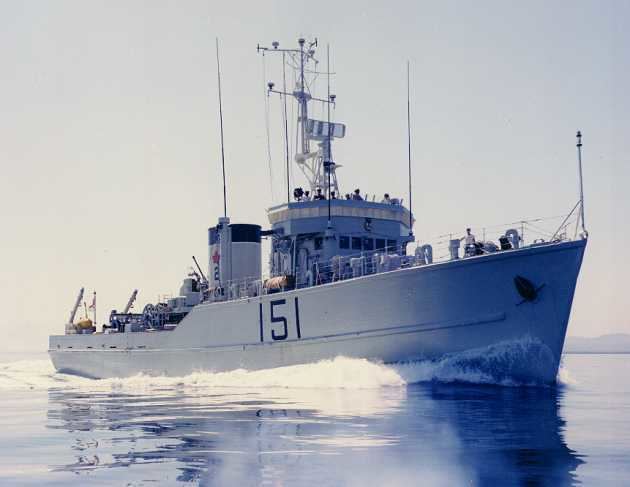Name Fortune Yard number 56 Commissioned 3 November 1954 Construction started 24 April 1952 Length 46 m Draft 2.4 m | Namesake Fortune Bay Laid down 24 April 1952 Decommissioned 28 February 1964 Launched 14 April 1953 Displacement 353,800 kg Builder Victoria Machinery Depot | |
 | ||
HMCS Fortune was a Bay-class minesweeper built for the Royal Canadian Navy. Named for Fortune Bay, located in Newfoundland, the vessel served in the Royal Canadian Navy for ten years before being sold for commercial purposes. Renamed MV Edgewater Fortune she saw service as a commercial yacht.
Contents
Initially named Belle Isle, Fortune was laid down on 24 April 1952 by Victoria Machinery Depot at Victoria with the yard number 51 and launched on 14 April 1953. The minesweeper was commissioned on 3 November 1954 with the hull identification number 151.
Design
The Bay class were designed and ordered as replacements for the Second World War-era minesweepers that the Royal Canadian Navy operated at the time. Similar to the Ton-class minesweeper, they were constructed of wood planking and aluminum framing.
Displacing 390 tons, or 412 tons deep load, the minesweepers were 152 ft (46 m) long with a beam of 28 ft (8.5 m) and a draught of 8 ft (2.4 m). They had a crew of 38 officers and ratings. The Bay-class minesweepers were powered by two GM 12-cylinder diesel engines driving two shafts creating 2,400 brake horsepower (1,800 kW). This gave the ships a maximum speed of 16 knots (30 km/h; 18 mph). The ships were armed with one 40 mm Bofors and were equipped with minesweeping gear.
Service
Fortune joined the Second Canadian Minesweeping Squadron after commissioning. In November 1955, the Second Canadian Minesweeping Squadron was among the Canadian units that took part in one of the largest naval exercises since the Second World War off the coast of California.
After nine years of naval service, including acting as the flagship of the Second Canadian Minesweeping Squadron during the Cuban Missile Crisis, Fortune was decommissioned on 28 February 1964. Placed up for auction by the Crown Assets Corporation, the ship was then sold into mercantile service. She was initially known as Greenpeace Two and used in an unsuccessful attempt to stop nuclear testing in the Aleutians in November 1971. The vessel was then refitted as the charter yacht MV Edgewater Fortune and was used for short cruises along the coast of British Columbia. She was also occasionally used for fishing, and for school trips to learn about the wildlife on the coast and in the water. Subsequently, the ship was turned into a 4,000-square-foot (370 m2) floating home in Vancouver.
